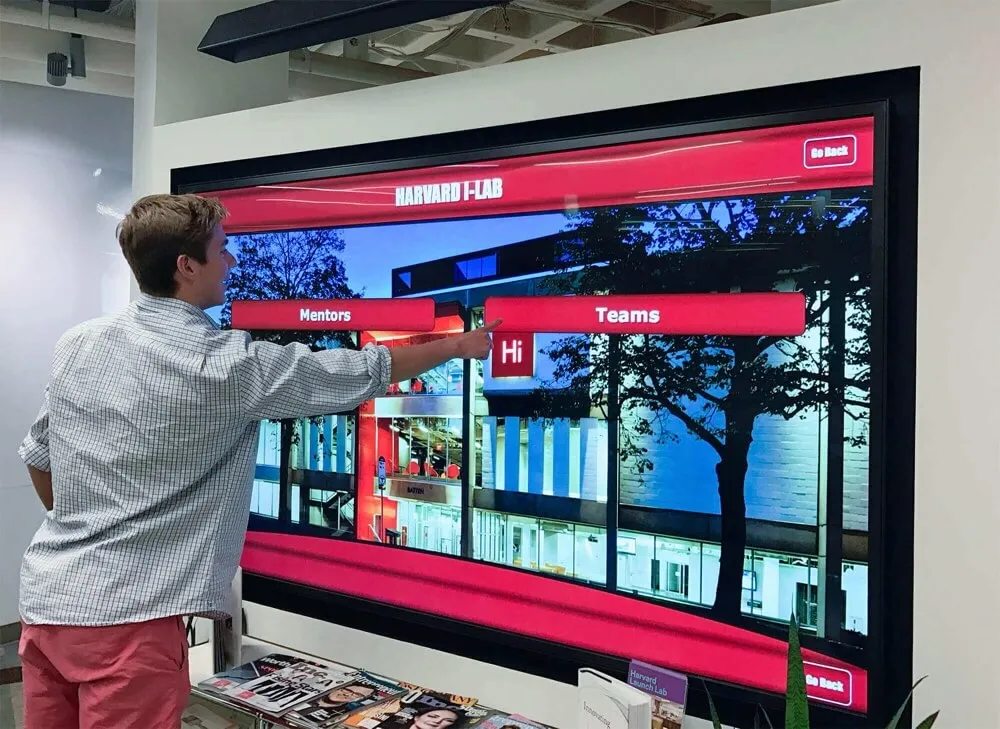Key Takeaways
Discover why mid-year launches offer strategic advantages for digital hall of fame implementation. Learn planning timelines, budget strategies, and implementation best practices for successful recognition programs.
Mid-year implementation capitalizes on natural lulls in institutional calendars, leverages favorable budget cycles, secures better vendor support, and ensures systems launch in time for high-visibility spring events. This comprehensive guide explores why mid-year timing works so well for digital hall of fame projects, provides detailed planning timelines, addresses budget considerations, and shares implementation strategies that maximize your chances of success.
The Strategic Case for Mid-Year Digital Hall of Fame Launches
Most major institutional initiatives cluster around predictable times—new school years in August or September, post-holiday January fresh starts, or summer months when facilities sit empty. This clustering creates resource competition, vendor capacity constraints, and rushed implementation timelines that undermine project quality. Mid-year launches avoid these pitfalls while offering unique advantages.
You Finally Have Time to Plan Properly
September through early November typically represents organized chaos in schools and athletic departments. Staff scrambles to start new academic years, fall sports demand constant attention, and daily operational demands consume available bandwidth. By mid-October through December, rhythms stabilize enough to focus on strategic projects requiring thoughtful planning.
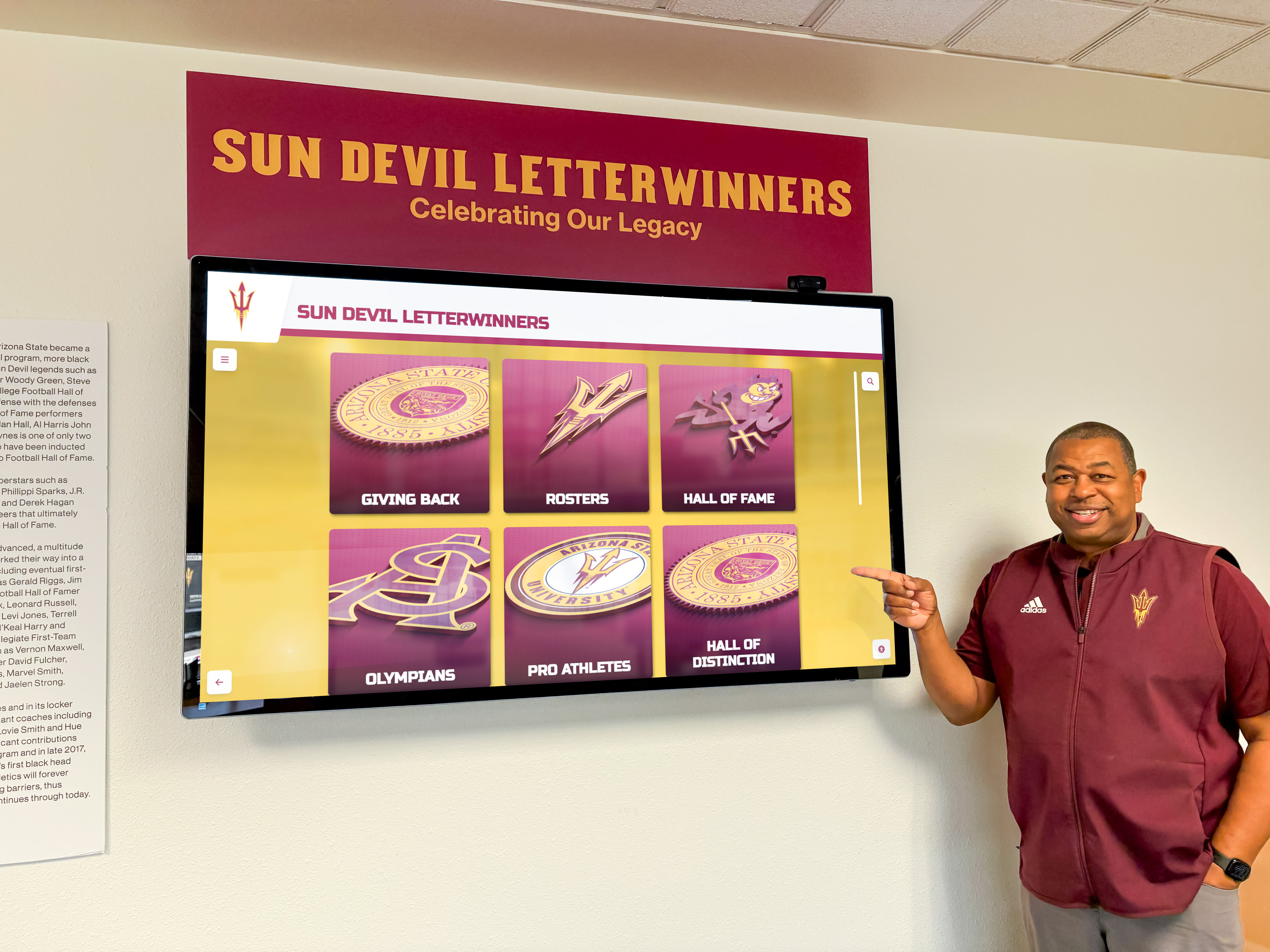
Proper hall of fame planning requires significant upfront investment:
Content Strategy Development means deciding which achievements warrant recognition, determining how far back historically you’ll extend initial content, establishing selection criteria for inductees, and identifying existing content assets versus materials requiring creation.
Technical Requirements Assessment involves evaluating available infrastructure like power access and network connectivity, determining optimal display locations based on traffic patterns and visibility, assessing mounting options and facility constraints, and understanding integration needs with existing systems.
Stakeholder Engagement requires securing administrative approval and buy-in, coordinating with facilities management on installation logistics, involving IT departments in network and security considerations, and engaging athletics staff, alumni coordinators, or other key users.
Budget Development encompasses researching solution options and comparative costs, identifying funding sources and approval processes, planning for both initial implementation and ongoing operation, and building cases for return on investment.
Attempting this planning during August or early September when calendars overflow proves nearly impossible. Mid-year timing provides the breathing room essential for thorough preparation that prevents costly mistakes or half-baked implementations that fail to achieve intended impact.
Budget Flexibility and Creative Funding Opportunities
Educational and institutional budget cycles create mid-year opportunities unavailable during other periods. Many schools discover funds available mid-year that wouldn’t be accessible during summer or early fall planning windows.
Mid-Year Budget Surplus Utilization becomes possible when departments finish fall semesters under budget, creating discretionary funds requiring expenditure before fiscal year-end. Recognition displays represent ideal investments for these funds—visible, lasting improvements that deliver ongoing value rather than consumable purchases.
Flexible Spending Periods in many institutional budget structures allow more discretionary authority over certain expenditure categories during specific windows. Understanding your organization’s budget calendar helps identify when approval processes prove easiest and funding most accessible.
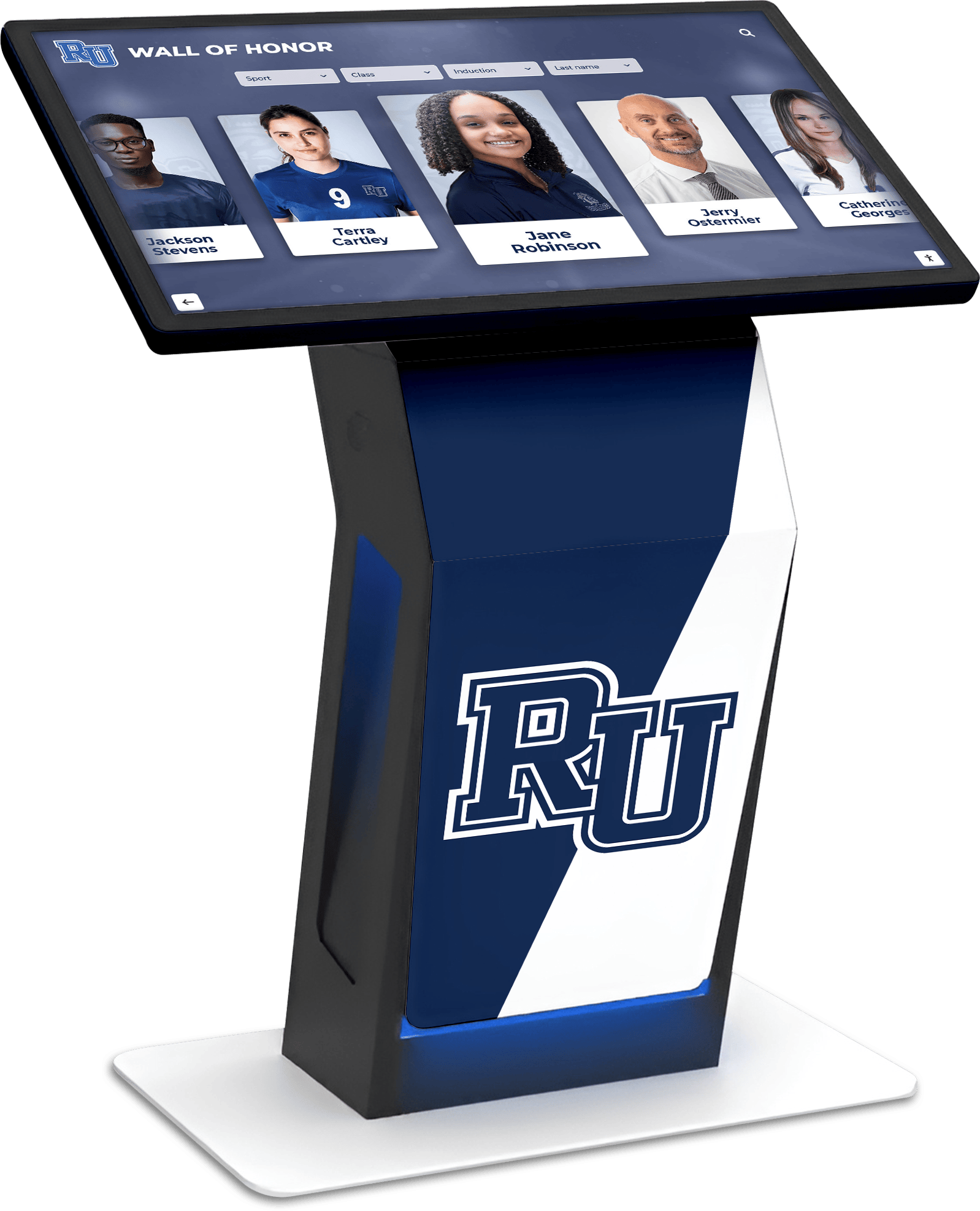
Booster Club Partnership Opportunities align well with mid-year timing. Athletic booster clubs typically complete fall fundraising by November or December, creating capital available for projects. Booster organizations love supporting visible improvements that celebrate athletes and enhance facilities. Approaching boosters mid-year with detailed proposals and vendor quotes makes funding requests concrete rather than speculative.
Holiday giving seasons from Thanksgiving through December create natural fundraising opportunities. Alumni and community members often feel more generous during this period, making it an ideal time to pitch hall of fame projects as meaningful ways to honor traditions and support current students.
Avoiding Spring Budget Crunches proves equally important. By spring, most institutional budgets face constraints as unanticipated expenses throughout the year consume contingency funds. Waiting until March or April often means competing for scarce resources with urgent operational needs. Mid-year positioning secures funding before these pressures intensify.
Superior Vendor Support and Implementation Services
Digital recognition providers experience seasonal demand fluctuations that create capacity constraints during peak periods. Most organizations launch major projects in summer or at school year beginnings, overwhelming vendor support resources precisely when customers need them most.
Mid-year implementation avoids these capacity issues entirely. From October through February, quality providers can offer more attentive service, faster response times, more flexible scheduling for installation and training, and greater availability of senior implementation specialists rather than junior staff handling overflow demand.
This enhanced support translates to better implementation outcomes. Projects receive more thorough attention during planning phases, faster turnaround on custom requirements or modifications, more comprehensive training ensuring staff can manage systems confidently, and smoother installations with fewer scheduling conflicts or delays.
Many vendors also offer mid-year promotions to smooth seasonal demand fluctuations. Taking advantage of these incentives can reduce project costs while receiving superior service—a rare combination of better quality at lower price points.
Comprehensive Mid-Year Implementation Timeline
Successful digital hall of fame launches require systematic approaches that address planning, procurement, content development, installation, and launch phases sequentially. This detailed timeline assumes an April unveiling to coincide with spring recognition events, working backward to mid-October initiation.
October-November: Foundation and Planning Phase
Week 1-2: Project Initiation and Team Formation
Begin by securing administrative approval for exploring digital recognition options. Form a cross-functional planning team including athletics staff or recognition program managers who will use the system daily, facilities personnel understanding installation requirements and constraints, IT representatives addressing network and security considerations, advancement or alumni relations staff if applicable, and budget authorities who can approve expenditures.
Hold initial planning meetings to establish shared vision for what the hall of fame should accomplish, identify must-have versus nice-to-have features, and determine success criteria for evaluating the project.
Week 3-4: Requirements Definition
Conduct detailed needs assessment covering content scope by determining which achievements, individuals, or teams warrant recognition, deciding historical depth—how far back you’ll initially go, and identifying existing content assets like photos, bios, statistics, or videos.
Evaluate technical requirements including optimal display locations based on traffic and visibility, infrastructure availability regarding power and network access, and preferred display formats such as wall-mounted, kiosk, or custom installations.
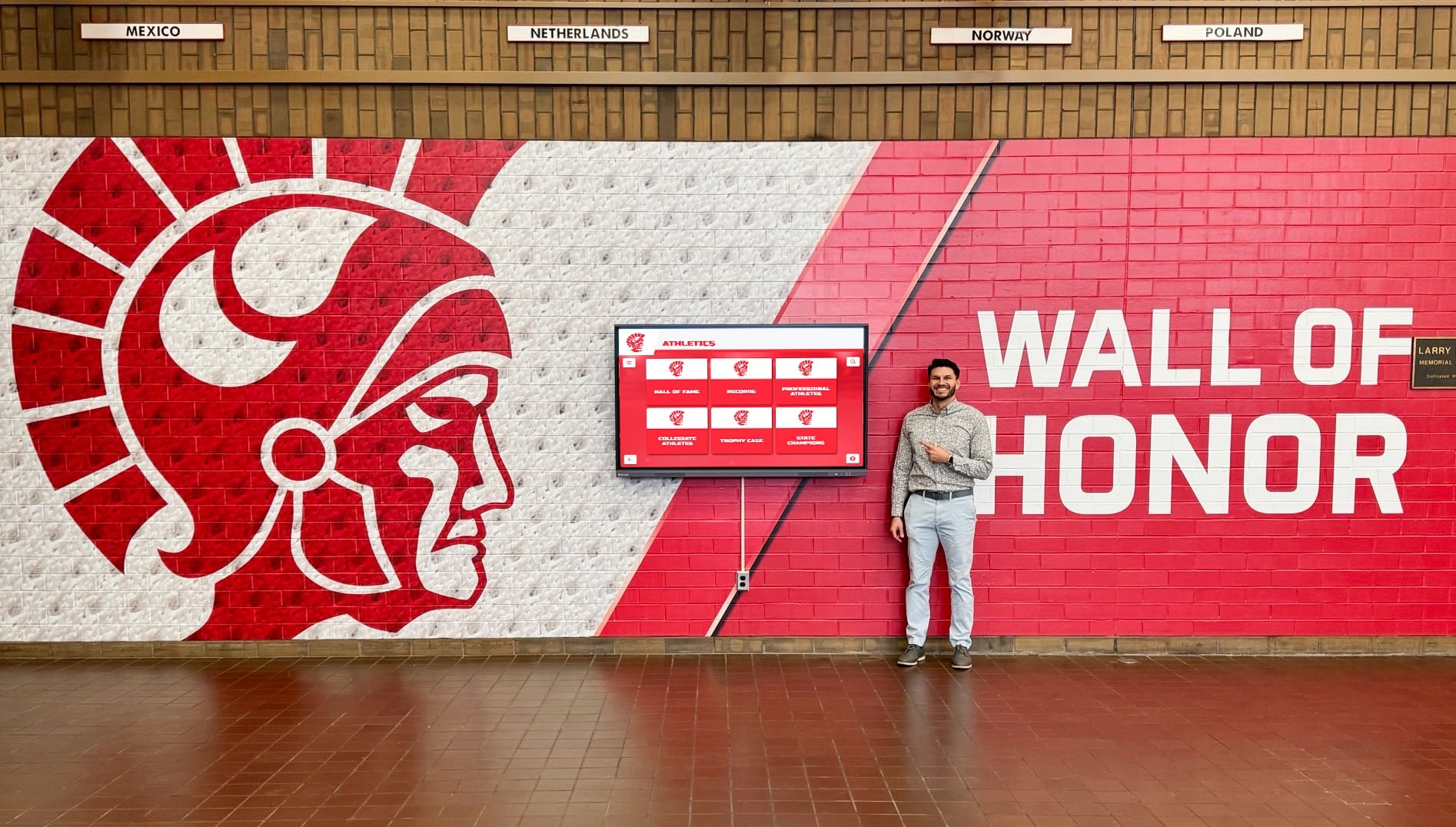
Establish budget parameters by researching typical investment ranges, identifying available funding sources, and determining approval processes and authority levels required.
Week 5-6: Vendor Research and Solution Evaluation
Research available solutions by reviewing digital recognition providers like Rocket Alumni Solutions specializing in education and athletics, examining case studies and client references from comparable institutions, and attending product demonstrations to understand capabilities and user experiences.
Develop evaluation criteria addressing ease of content management for non-technical staff, content capacity and organizational flexibility, hardware quality and display presentation, mobile and web accessibility for remote audiences, analytics and engagement tracking capabilities, and vendor support quality and responsiveness.
Week 7-8: Proposal Review and Vendor Selection
Request detailed proposals from 2-3 finalists including specific pricing for your requirements, implementation timelines and support services, training and ongoing assistance provisions, and technology specifications and warranties.
Conduct reference calls with existing clients to verify vendor claims, check satisfaction levels, and understand actual implementation experiences. Make final selection based on comprehensive evaluation, then secure necessary approvals and initiate procurement processes.
December-January: Procurement and Content Development
Week 9-10: Contract Finalization and Kickoff
Complete contracting including purchase order generation or contract execution, deposit payment if required, and formal project kickoff meetings with vendor implementation teams.
Establish project governance with clear roles and responsibilities, regular communication schedules, decision-making authorities, and escalation procedures for issues.
Week 11-14: Content Strategy and Asset Collection
This phase represents the most time-intensive aspect of implementation. Develop comprehensive content plans specifying which individuals, teams, or achievements receive recognition, determining content depth and formats for different recognition levels, establishing templates ensuring consistent presentation, and creating style guides for photos, bios, and other elements.
Begin systematic asset collection by mining yearbooks, media guides, and historical documents, conducting outreach to alumni for photographs and information, digitizing physical materials like trophies, plaques, or memorabilia, researching record books and statistical archives, and organizing collected materials systematically for efficient content creation.
Many successful programs engage volunteers or student groups in historical research, providing authentic learning opportunities while distributing workload. Consider connecting projects with history classes, journalism programs, or alumni associations that might provide research assistance.
Week 15-16: Content Creation and Review
Transform collected assets into recognition content by writing biographical narratives and achievement descriptions, editing and optimizing photographs for digital display, creating or editing video content when available, and organizing content according to system structures and categorizations.
Implement quality review processes ensuring factual accuracy of all content, consistency in tone, style, and formatting, appropriate permissions for photos and media, and completeness across all planned recognition categories. Build in time for corrections and revisions—first drafts rarely meet final quality standards.
February-March: Installation and Training
Week 17-18: Technical Installation
Coordinate installation logistics by scheduling during periods minimizing disruption, arranging facility access and staging areas, confirming power and network readiness, and having appropriate personnel available during installation.
Complete physical installation including mounting hardware and displays, connecting power and network infrastructure, and installing any complementary elements like environmental graphics or wayfinding.
Conduct thorough system testing to verify display functionality and connectivity, confirm content displays correctly across all features, test touchscreen responsiveness and user interface, and validate mobile and web companion experiences if applicable.
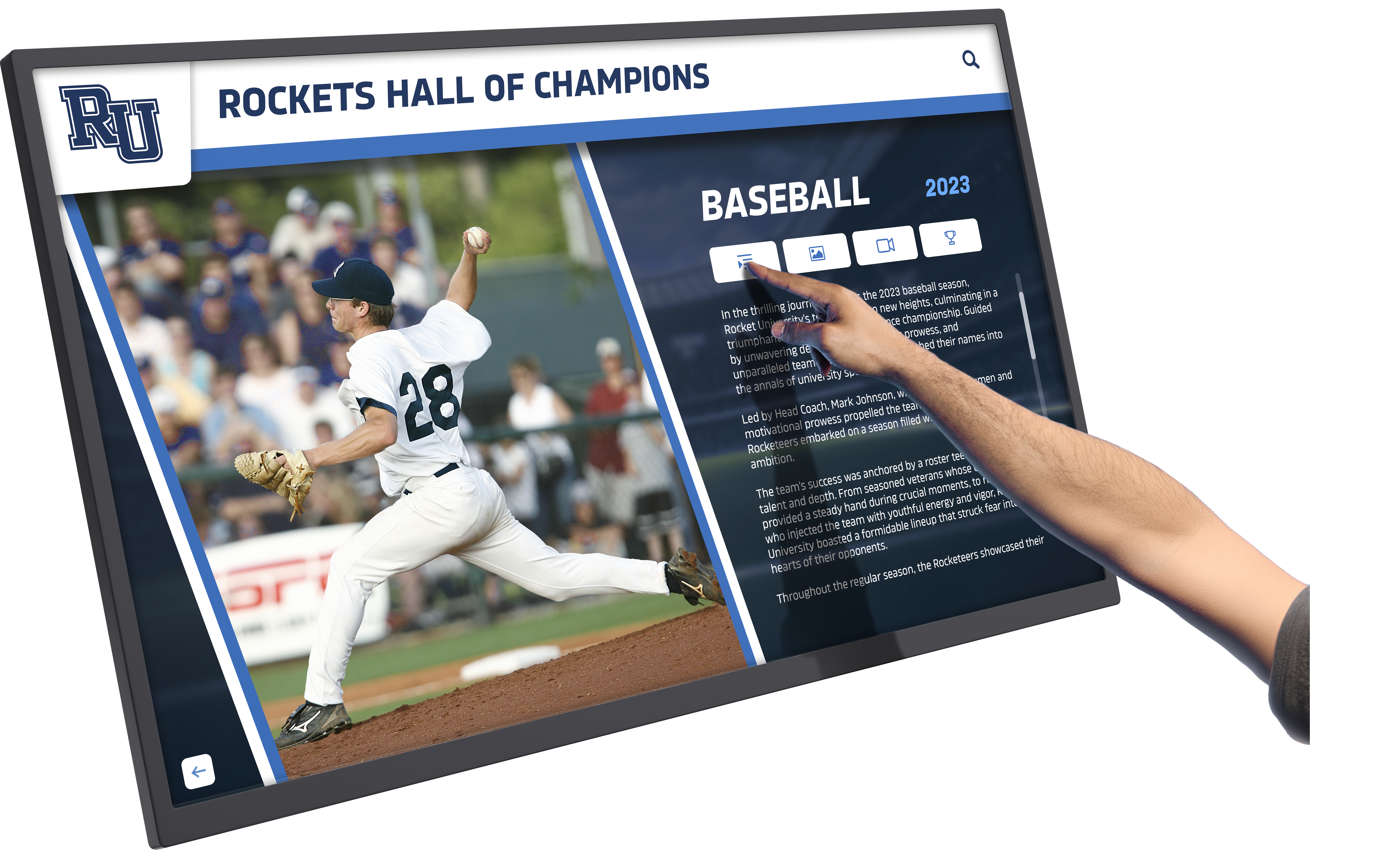
Week 19: Content Population and User Training
Load prepared content into the system using bulk import tools when available, manually entering content when necessary, and organizing content according to planned categorization and navigation.
Conduct comprehensive training for staff who will manage the system covering content management platform navigation, adding and editing recognition entries, updating photos and media, managing categories and organizational structures, and troubleshooting common issues.
Provide end-user orientation for how visitors interact with displays, key features and navigation patterns, and ways to maximize engagement and utilization.
April: Launch and Celebration
Week 20-21: Soft Launch and Refinement
Conduct soft launch with limited audience such as staff previews, student athlete focus groups, or booster club demonstrations. Gather feedback about user experience, content comprehensiveness, technical functionality, and suggested improvements.
Make refinements based on feedback addressing any content gaps or errors, improving navigation or organization, fine-tuning display settings, and enhancing features based on usage observations.
Week 22: Official Public Launch
Plan launch event coordinating with existing high-visibility occasions like hall of fame induction ceremonies, championship celebrations, homecoming events, or senior recognition nights. These contexts provide natural audiences and heightened school spirit that amplify launch impact.
Implement comprehensive launch communications including announcement through school communication channels, social media promotion with photos and video, press releases to local media, and direct outreach to alumni and community stakeholders.
Create promotional content showcasing display features and benefits, highlighting select recognition stories, inviting community interaction and exploration, and providing clear calls-to-action for nominations or content submission.
Funding Strategies for Mid-Year Implementation
Even institutions enthusiastic about digital recognition may face budget constraints that complicate implementation. Multiple funding approaches can make projects feasible within available resources.
Direct Institutional Funding Sources
Athletic Department Operating Budgets may include discretionary funds for facility improvements, recognition programs, or technology upgrades that digital halls of fame address. Present business cases emphasizing recruiting benefits from showcasing program traditions, alumni engagement opportunities through comprehensive recognition, and donor cultivation tools that support fundraising objectives.
Facility Enhancement Allocations in capital or facility improvement budgets represent another avenue. Digital recognition improves facilities aesthetically while adding functional value, making it appropriate for these funding categories.
Technology Refresh Budgets allocated for classroom or facility technology upgrades may apply to recognition displays, particularly when systems include educational components or serve broader communications functions beyond pure recognition.
Philanthropic and External Funding
Booster Club Special Projects offer significant funding potential. Athletic boosters love supporting visible improvements that celebrate athletes and enhance facilities. Frame recognition displays as lasting tributes to program excellence that current and future athletes will appreciate for generations.
Approach booster organizations with detailed proposals including specific vendor quotes, visual mockups showing what displays will look like, clear timelines from approval to launch, and compelling cases about benefits to programs and athletes.
Memorial or Honor Gifts provide emotionally meaningful funding opportunities. Families wishing to honor deceased community members often seek lasting, visible tributes. Digital recognition displays that include dedications or memorial features offer permanent ways to honor loved ones while benefiting institutions.
Alumni Giving Campaigns targeting former athletes or program participants can successfully fund recognition projects. Alumni who would be included in displays have personal stakes in seeing comprehensive recognition systems implemented. Campaigns emphasizing “help us honor your era” or “ensure your teammates are properly recognized” resonate strongly with these audiences.
Corporate Sponsorships from local businesses supporting athletics provide another avenue. Companies appreciate visible association with positive recognition programs. Sponsorships might include naming rights for displays, logo placement in appropriate contexts, or recognition as program supporters.
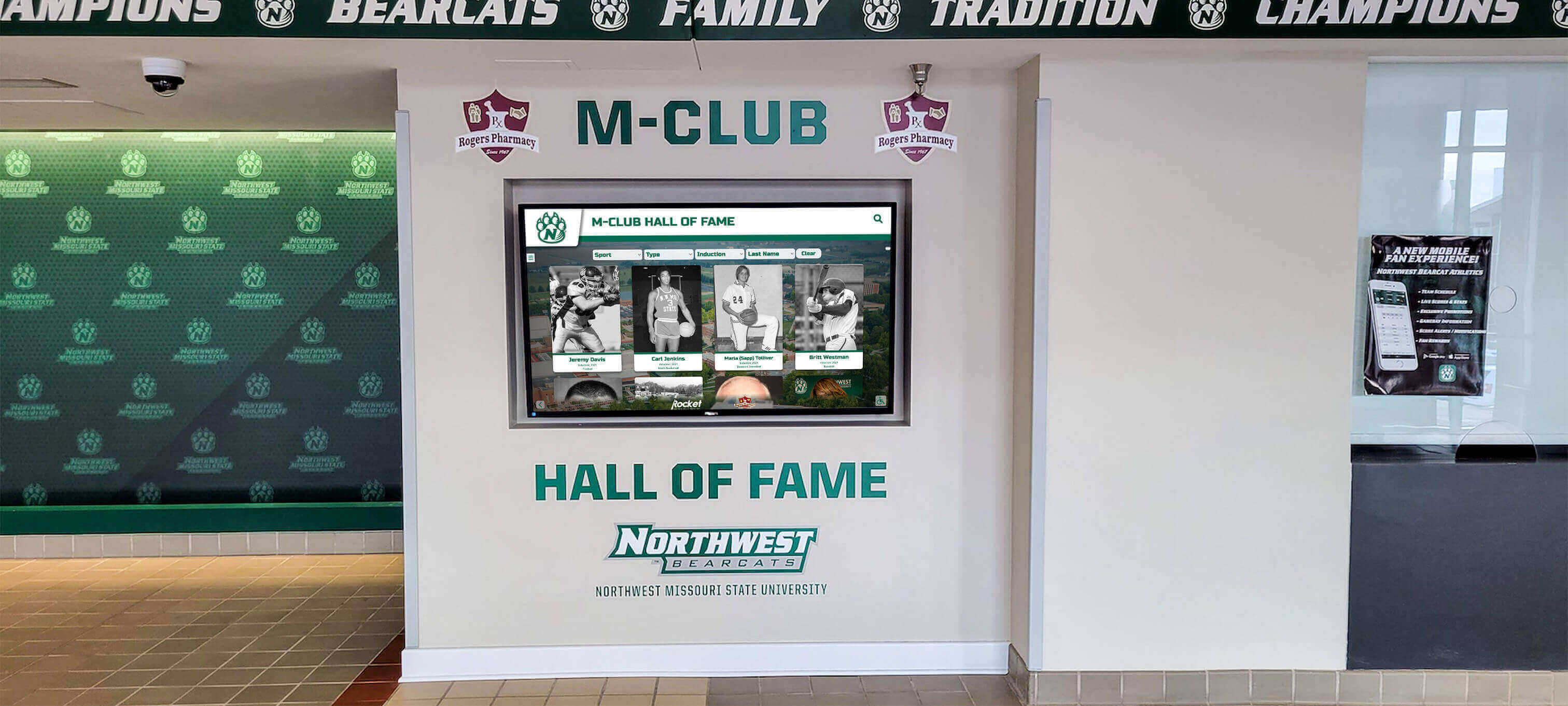
Phased Implementation Approaches
Budget constraints needn’t prevent launching recognition programs. Many schools successfully implement displays in phases:
Phase 1: Core Display focuses on most essential recognition—recent inductees, championship teams, or signature achievements. Initial investment of $10,000-$15,000 establishes foundation while delivering immediate value.
Phase 2: Historical Expansion adds comprehensive historical content as additional funding becomes available. Software platforms accommodate unlimited content, so expanding recognition requires content development time rather than additional hardware investment.
Phase 3: Enhanced Features might add companion web platforms, mobile applications, additional display locations, or integrated environmental graphics once programs prove value through initial implementations.
This staged approach demonstrates impact before seeking additional investment while preventing budget exhaustion that derails projects. Starting focused beats launching poorly funded programs that never achieve intended scope or quality.
Ensuring Your Mid-Year Launch Succeeds: Critical Success Factors
Beyond following implementation timelines, certain practices separate successful launches from disappointing implementations that fail to achieve objectives.
Engage Stakeholders Throughout Implementation
Digital halls of fame serve diverse audiences—current students and athletes, alumni, families, visitors, and community members. Engaging these stakeholders during planning and implementation ensures systems meet real needs rather than implementing what planners assume stakeholders want.
Student-Athlete Input proves particularly valuable. Current participants can identify which historical figures inspire them, suggest recognition categories meaningful to current teams, and provide perspective on how recognition could motivate and engage current programs.
Alumni Consultation helps with content development while building excitement among graduates who may be recognized. Alumni can supply photographs, correct historical information, share stories providing context, and suggest recognition categories for their eras.
Administrative Alignment ensures recognition programs support broader institutional priorities. Engage leadership in defining how recognition should reinforce school values, support strategic initiatives, and contribute to community building.
Plan for Sustainable Long-Term Management
Implementation represents only the beginning. Digital recognition requires ongoing management to remain current, comprehensive, and engaging. Successful programs establish sustainability from launch.
Designate Clear Responsibility for content management and system administration. Whether specific staff positions, dedicated volunteers, or shared responsibilities across departments, someone must own ensuring the system stays updated.
Establish Regular Update Rhythms for adding new inductees, updating existing content, celebrating anniversaries and milestones, and refreshing featured content. Annual induction ceremonies create natural update cycles while maintaining visibility.
Create Content Pipelines making it easy to gather information, photos, and media about recognition candidates. Nomination forms, alumni outreach processes, and systematic documentation of current achievements ensure continuous content flow rather than scrambling during annual update periods.
Budget Ongoing Costs including software subscriptions or maintenance agreements, content development time and resources, occasional hardware maintenance or replacement, and marketing to maintain community awareness and engagement.
Systems that launch well but deteriorate through neglect waste initial investments while failing to deliver ongoing value. Sustainability planning should receive equal attention to implementation planning.
Leverage Technology Partners Effectively
Working with experienced recognition technology providers accelerates implementation while avoiding common mistakes. Maximize value from these partnerships by clearly communicating requirements and constraints upfront, asking questions rather than assuming understanding, utilizing training comprehensively so staff can manage systems confidently, and providing feedback during implementation for course corrections.
Strong vendor relationships often evolve into ongoing partnerships providing valuable consultation, implementation support for expansions, and problem-solving when challenges arise. Treating vendors as partners rather than mere suppliers typically produces better outcomes.
Making the Most of Your Spring Launch
Implementing by April positions digital halls of fame perfectly for high-impact spring unveilings that maximize visibility and community engagement.
Strategic Timing with Spring Events
Spring brings numerous recognition events providing ideal contexts for launching digital displays:
Hall of Fame Induction Ceremonies in March or April create perfect launch opportunities. New inductees experience being added to impressive digital recognition systems rather than simply receiving plaques. This enhanced experience strengthens emotional impact while demonstrating institutional commitment to comprehensive recognition.
Senior Recognition Events celebrating graduating students and student-athletes provide another natural context. Honoring current seniors while unveiling systems preserving achievements of past graduates creates powerful intergenerational connections.
Championship Celebrations when spring sports teams achieve success offer opportune moments. Revealing new recognition systems during celebratory atmospheres amplifies positive associations while reaching enthusiastic audiences.
Graduation Weekend Activities attract large alumni populations returning to campus. Leveraging these gatherings for hall of fame launches maximizes exposure to graduates who appreciate comprehensive recognition of program heritage.
Building Launch Momentum
Successful launches generate excitement extending beyond unveiling days through comprehensive marketing efforts, community engagement activities, and media coverage.
Pre-Launch Teasers build anticipation by sharing sneak peeks of content, highlighting individual recognition stories, conducting countdowns to unveiling, and inviting community speculation about who will be recognized.
Launch Day Activities might include ribbon-cutting ceremonies with administrators and honorees, guided tours demonstrating system features, opportunities for honorees to see their recognitions, and photo opportunities creating shareable social content.
Post-Launch Engagement sustains momentum through featuring “inductee of the week” spotlights, encouraging visitors to share favorite discoveries, collecting and sharing reactions and testimonials, and maintaining active social media conversation about recognition content.
Media outreach to local newspapers, radio, and television stations often results in coverage, particularly when launches include interesting stories about legendary figures or longstanding traditions finally receiving proper documentation.
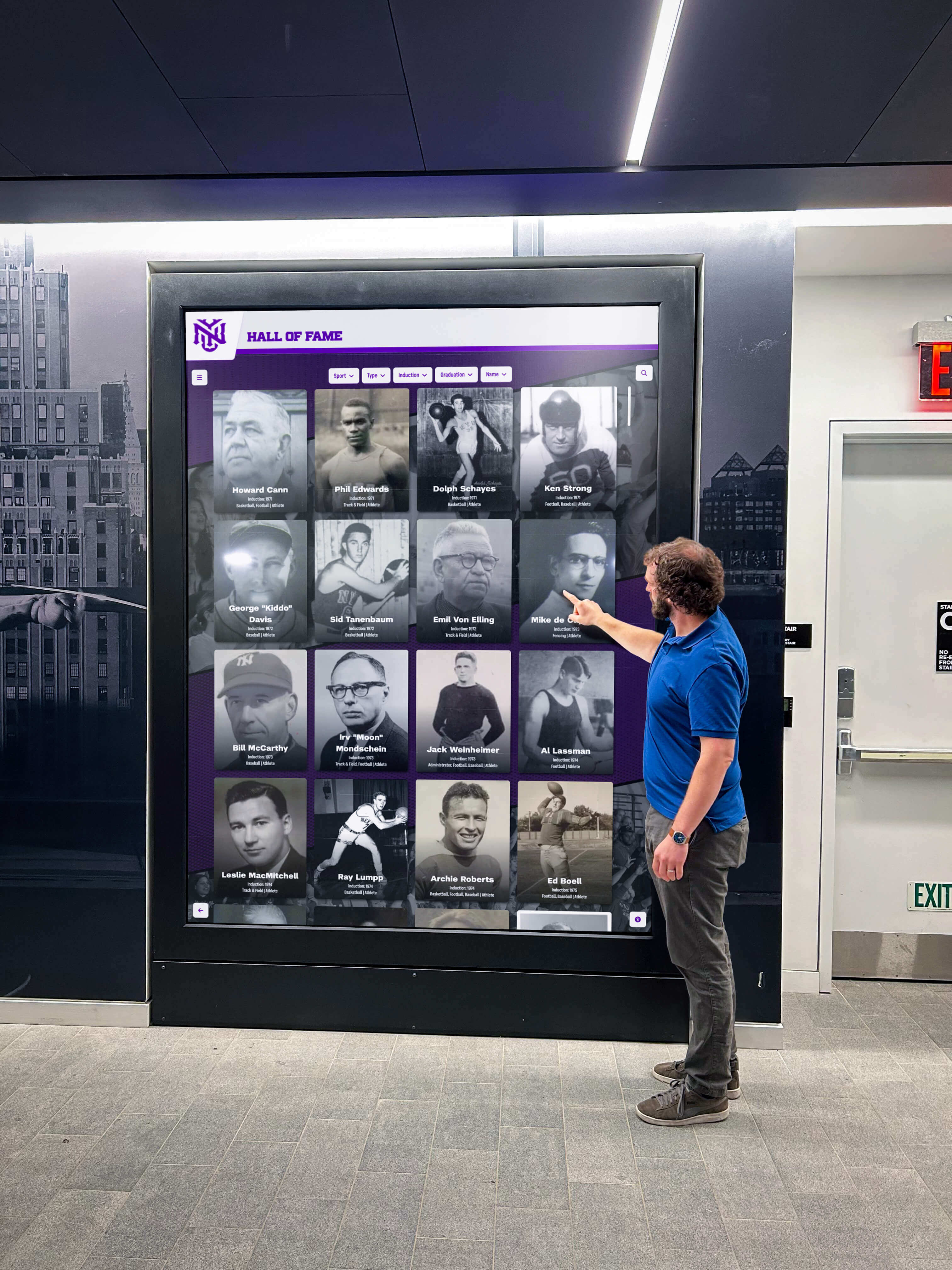
Common Mid-Year Implementation Challenges and Solutions
While mid-year timing offers advantages, certain challenges require proactive management.
Holiday Interruptions in December-January
December holidays and early January returns create gaps in project continuity. Plan around these interruptions by front-loading critical decision-making before holidays, scheduling vendor work during accessible periods, building buffer time into timelines for holiday impacts, and communicating clearly about availability and response times.
Most challenges arise from failing to anticipate disruptions rather than from disruptions themselves. Explicit planning for holiday impacts prevents deadline misses or quality compromises.
Weather and Facility Access Considerations
Winter weather in many regions can complicate installations requiring facility access or outdoor work. Mitigate weather risks by scheduling installations during periods with backup dates available, confirming indoor installation pathways avoiding weather exposure, and maintaining flexible timelines accommodating reasonable delays.
Indoor installations prove less vulnerable than external work, but schools in harsh winter climates should consider regional conditions during planning.
Competing for Attention During Busy Spring Seasons
Spring brings intensifying activity as school years conclude and athletics reach championship seasons. Launching recognition systems during busy periods requires extra effort ensuring adequate attention despite competing priorities.
Combat attention competition through engaging champions who will promote recognition systems actively, creating compelling launch events people prioritize attending, leveraging existing high-visibility events for maximum efficiency, and sustaining post-launch marketing preventing quick fade from community consciousness.
The Long-Term Value of Strategic Mid-Year Timing
While this guide emphasizes mid-year launch advantages, the ultimate measure of success extends far beyond implementation timing. Digital halls of fame deliver lasting value through several dimensions:
Recruiting Impact as prospective students and athletes encounter tangible evidence of program excellence and tradition that influences enrollment decisions. Solutions like digital recognition displays create impressive experiences during facility tours.
Alumni Engagement strengthens as graduates see their achievements honored comprehensively. Recognition drives emotional connections translating into increased involvement, event attendance, and philanthropic support. Well-designed alumni recognition programs deliver measurable engagement improvements.
Community Pride as schools, athletic programs, and organizations preserve and celebrate heritage. Comprehensive recognition systems become community assets that residents value and support, strengthening bonds between institutions and communities they serve.
Motivation for Current Participants who see clear pathways to recognition and concrete examples of excellence achieved by predecessors. Student recognition programs that celebrate diverse achievements inspire broad populations rather than only elite performers.
Institutional Memory Preservation ensuring achievements, traditions, and legacies survive beyond living memory. Digital platforms preserve historical content indefinitely while making it accessible to future generations who might never encounter legends they’re meant to emulate.
These strategic benefits justify recognition investments regardless of implementation timing. However, launching mid-year maximizes likelihood of successful implementation that delivers these benefits fully rather than creating disappointing half-measures that fail to achieve potential impact.
Taking the Next Step: Is Mid-Year Right for Your Institution?
If you’re reading this in October through January, you’re positioned perfectly to capitalize on mid-year launch advantages. If you’re reading during other periods, understanding these timing benefits helps you plan optimal launch windows for future implementation.
Ask yourself critical questions: Do we have bandwidth during October through February to focus on planning? Are budget opportunities available mid-year that wouldn’t exist other times? Would spring launch timing align with key events where unveiling would maximize impact? Do we have vendor selection flexibility, or are we tied to specific procurement windows?
If mid-year timing aligns with your institutional realities and strategic priorities, beginning planning now positions you for April implementation that showcases recognition systems during optimal spring contexts.
For schools and organizations ready to transform how they honor achievement while preserving institutional heritage, digital recognition solutions provide comprehensive platforms specifically designed for educational institutions and athletic programs. From initial planning through launch and beyond, experienced providers offer support ensuring your recognition program achieves intended goals while delivering lasting value to your community.
The time between October and February represents a strategic window for launching recognition programs that will serve your institution for decades. The question isn’t whether comprehensive recognition benefits your community—it clearly does—but whether you’ll seize the mid-year timing advantage to implement a system positioned for maximum success.
Conclusion: The Mid-Year Advantage for Digital Recognition
Mid-year implementation offers a perfect storm of advantages—adequate planning time, budget flexibility, superior vendor support, and optimal spring launch positioning. Schools and organizations launching digital halls of fame between October and April avoid the resource competition and rushed timelines that plague summer implementations while ensuring systems debut during high-visibility spring recognition events.
The path from October planning to April unveiling requires systematic approaches addressing stakeholder engagement, content development, vendor selection, technical implementation, and launch planning. However, institutions following structured timelines while avoiding common pitfalls consistently achieve successful outcomes that deliver value for decades.
Whether celebrating basketball excellence, honoring academic achievement, or preserving comprehensive institutional heritage, digital recognition platforms transform how communities celebrate accomplishment while inspiring future generations.
If you’re considering digital hall of fame implementation, mid-year timing offers strategic advantages you shouldn’t overlook. The work ahead requires commitment and systematic execution, but the resulting recognition systems deliver lasting benefits justifying every hour invested in thoughtful planning and quality implementation.
Your community’s achievements deserve recognition that matches their significance. Mid-year launch timing helps ensure your recognition program achieves its full potential from day one.
